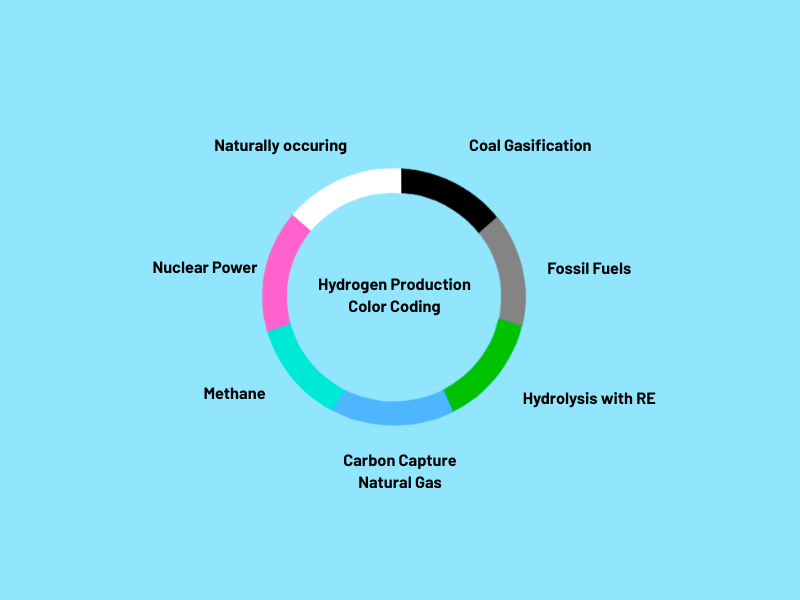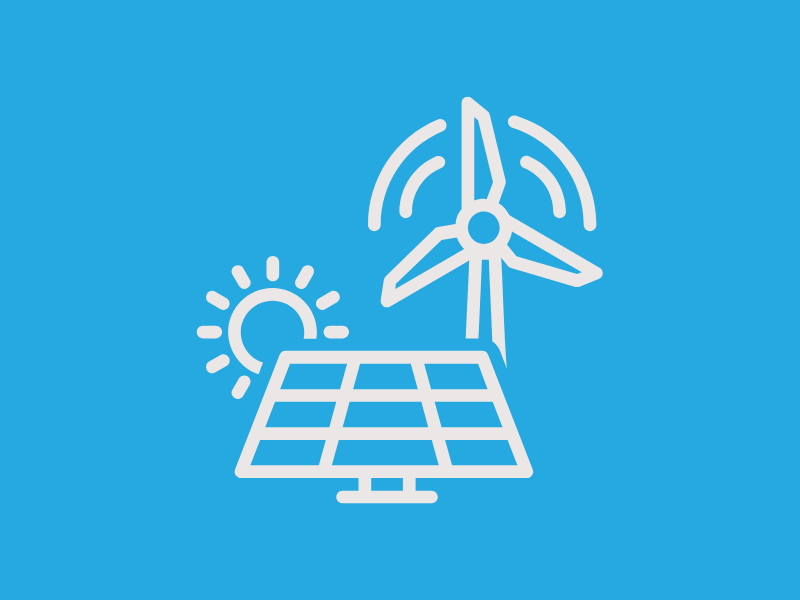We’ve all heard about hydrogen energy by now, right? It emerged as a critical component in the global transition toward cleaner, sustainable energy systems. But is hydrogen energy renewable?
After strict safety measures implemented, both governments and industries worldwide seek alternatives to fossil fuels and the question “Is hydrogen energy renewable?” becomes increasingly important. The answer depends entirely on how the hydrogen is produced, making this a more nuanced topic than it might initially appear…
Understanding Hydrogen as an Energy Carrier
Before diving into its renewable potential (we already covered sustainability of hydrogen), it’s essential to understand that hydrogen is not an energy source in the traditional sense but rather an energy carrier. Much like electricity, hydrogen stores and transports energy that was originally generated from another source. This fundamental characteristic means that hydrogen’s environmental impact and renewability depend entirely on the production method used to create it.
Hydrogen itself burns cleanly, producing only water and heat when consumed, making it an attractive option for decarbonizing sectors that are difficult to electrify. However, the environmental benefits only materialize if the hydrogen is produced using clean methods.
The Color-Coded Classification System
The hydrogen industry uses a color-coding system to distinguish between different production methods and their environmental impacts. This system helps consumers and policymakers understand the carbon footprint associated with each type of hydrogen production.

Green Hydrogen
Green hydrogen represents the truly renewable form of hydrogen energy. It is produced through electrolysis, a process that uses electricity to split water molecules into hydrogen and oxygen. When this electricity comes from renewable sources such as solar, wind, hydroelectric, or other clean energy sources, the entire production process generates virtually zero greenhouse gas emissions.
The European Commission defines renewable hydrogen as hydrogen produced through water electrolysis using renewable electricity, with full life-cycle greenhouse gas emissions close to zero[5]. This definition emphasizes both the production method and the energy source, ensuring that only truly clean hydrogen qualifies as renewable.
Blue and Grey Hydrogen
In contrast to green hydrogen, grey hydrogen is produced from natural gas through steam methane reforming (SMR) without capturing the resulting carbon emissions. This process generates significant CO2 emissions, typically producing 9-12 kg of CO2 for every kilogram of hydrogen produced.
Blue hydrogen follows the same production process as grey hydrogen but incorporates carbon capture and storage (CCS) technology to trap and store the CO2 emissions. While this reduces the carbon footprint compared to grey hydrogen, it doesn’t eliminate emissions entirely, and the long-term effectiveness of carbon storage remains a consideration.
Alternative Renewable Pathways
Beyond electrolysis, several other pathways can produce renewable hydrogen:
Biomass-derived hydrogen offers another renewable route. Through processes like gasification, pyrolysis, or biological fermentation, organic materials such as agricultural waste, forest residues, and energy crops can be converted into hydrogen. When combined with carbon capture and storage, biomass gasification can even result in negative emissions, as the biomass absorbs CO2 during growth.
White or natural hydrogen represents an emerging renewable resource. This naturally occurring hydrogen forms through geological processes, such as serpentinization, where water reacts with iron-rich minerals. While still in early exploration stages, natural hydrogen could provide a low-cost, low-carbon source with production costs as low as $0.5-1 per kilogram.
Current Market Reality and Future Potential
Despite hydrogen’s renewable potential, the current global hydrogen market remains heavily dependent on fossil fuels. As of recent data, approximately 99.6% of global hydrogen production comes from fossil fuel sources, with 71% from natural gas and significant portions from coal. Green hydrogen accounts for less than 0.1% of total global production.
This disparity exists primarily due to cost differences. Grey hydrogen currently costs between $1-3 per kilogram, while green hydrogen ranges from $4-12 per kilogram. However, projections indicate that green hydrogen costs will decline significantly as renewable electricity becomes cheaper and electrolyzer technology improves.
The Path to Renewable Hydrogen Dominance
Several factors are driving the transition toward renewable hydrogen:
Technological advancement continues to improve electrolyzer efficiency and reduce costs. Modern alkaline electrolyzers operate at 60-80% efficiency, with newer technologies like solid oxide electrolyzers potentially reaching even higher efficiencies.
Policy support plays a crucial role in accelerating deployment. The European Union has set binding targets requiring that 42% of hydrogen used in industry must come from renewable sources by 2030, rising to 60% by 2035. Similar policies worldwide are creating market demand for clean hydrogen.
Infrastructure development is expanding rapidly. The global electrolyzer manufacturing capacity is expected to double by 2025, with significant investments in renewable electricity generation providing the clean power needed for green hydrogen production.
Environmental and Resource Considerations
While renewable hydrogen offers significant environmental benefits, its production does require careful resource management. Green hydrogen production through electrolysis requires substantial amounts of clean water, typically 9-11 liters per kilogram of hydrogen produced. This creates potential challenges in water-scarce regions, where desalination may be necessary.
However, when renewable hydrogen replaces fossil fuels, the net environmental impact is strongly positive. The avoided emissions from displaced fossil fuel use, combined with the clean production process, result in substantial carbon reductions across the entire energy system.
Applications Driving Renewable Hydrogen Demand
Renewable hydrogen’s versatility makes it valuable across numerous applications where direct electrification is challenging or impossible:
Industrial processes such as steel production, ammonia synthesis for fertilizers, and petrochemical refining can use renewable hydrogen to replace fossil fuel-based processes.
Transportation applications include fuel cell vehicles for heavy-duty transport, shipping, and aviation, where hydrogen’s high energy density provides advantages over battery electric systems.
Energy storage represents a critical application, allowing excess renewable electricity to be stored as hydrogen and converted back to electricity when needed, providing seasonal and long-duration storage capabilities.
The Verdict on Renewable Hydrogen
Yes, hydrogen energy can be renewable, but only when produced using renewable methods. Green hydrogen, produced through electrolysis powered by renewable electricity, represents the purest form of renewable hydrogen. Other pathways, including biomass gasification and natural hydrogen extraction, can also provide renewable hydrogen under the right conditions.
The key lies in the production method. While hydrogen as a molecule is always the same regardless of how it’s made, the environmental impact and renewability depend entirely on the energy sources and processes used to create it. As technology advances and costs decline, renewable hydrogen is positioned to play an increasingly important role in the global clean energy transition.
The transition from today’s fossil fuel-dominated hydrogen market to a renewable hydrogen economy will require continued investment in clean electricity generation, electrolyzer technology, and supporting infrastructure. However, with proper policy support and technological advancement, renewable hydrogen can become a cornerstone of a sustainable energy future, helping to decarbonize hard-to-electrify sectors while providing clean, versatile energy storage and transport capabilities.
Sources
- Is Hydrogen Renewable? – Energy Tracker Asia
- What is green hydrogen and why do we need it? An expert explains
- The hydrogen colour spectrum | National Grid
- Renewable hydrogen – Energy – European Commission https://energy.ec.europa.eu/topics/eus-energy-system/hydrogen/renewable-hydrogen_en
- Hydrogen production – Wikipedia https://en.wikipedia.org/wiki/Hydrogen_production
- Biomass gasification for hydrogen production – IEA Bioenergy https://www.ieabioenergy.com/blog/publications/biomass-gasification-for-hydrogen-production/
- The white gold rush and the pursuit of natural hydrogen https://www.rystadenergy.com/news/white-gold-rush-pursuit-natural-hydrogen
- White Natural Hydrogen – Beam Earth https://www.beam.earth/white-hydrogen/
- Green Hydrogen to Undercut Gray Sibling by End of Decade https://about.bnef.com/insights/clean-energy/green-hydrogen-to-undercut-gray-sibling-by-end-of-decade/
- Hydrogen Energy in 2025: Breaking Down Technical Barriers and … https://energiesmedia.com/hydrogen-energy-in-2025-breaking-down-technical-barriers-and-market-opportunities/
- Renewable and low-carbon hydrogen – European Parliament https://www.europarl.europa.eu/RegData/etudes/BRIE/2025/767227/EPRS_BRI(2025)767227_EN.pdf
- A first look at water demand for green hydrogen and concerns https://ptx-hub.org/a-first-look-at-water-demand-for-green-hydrogen-and-concerns-and-opportunities-with-desalination/
- Hydrogen Energy Storage Market Size & Share Report, 2030 https://www.grandviewresearch.com/industry-analysis/hydrogen-energy-storage-market
- Hydrogen Storage Technologies: Applications in Transportation … https://intimedia.id/read/hydrogen-storage-technologies-applications-in-transportation-power-generation-and-industrial-processes



